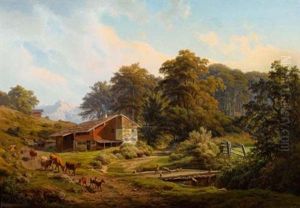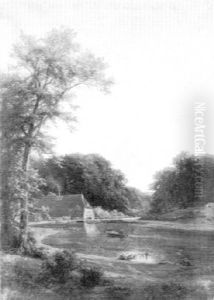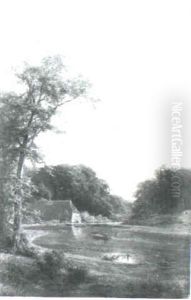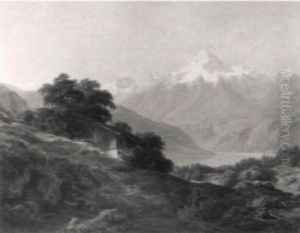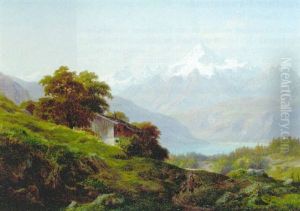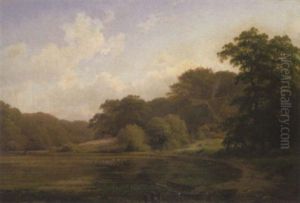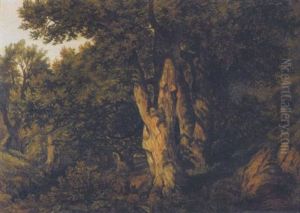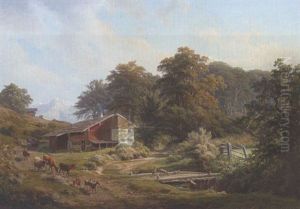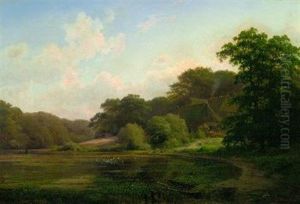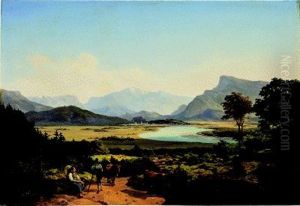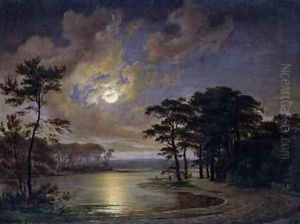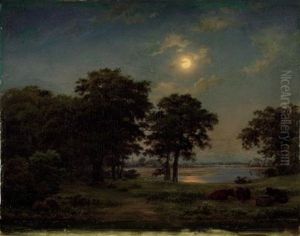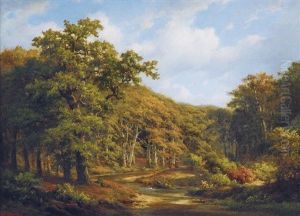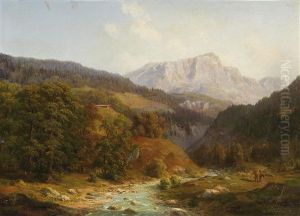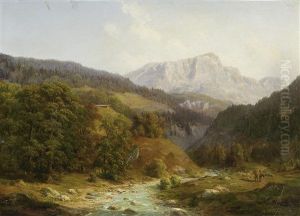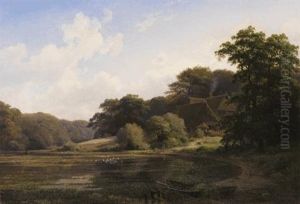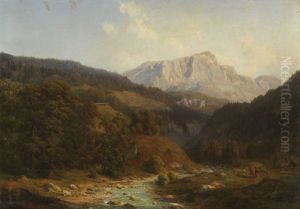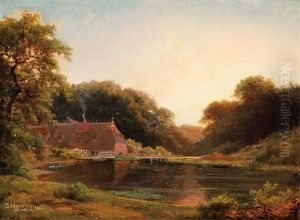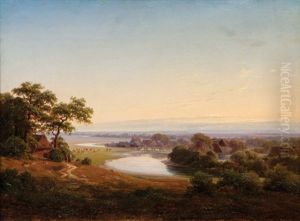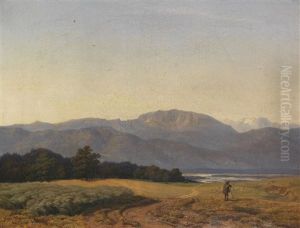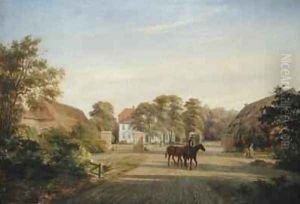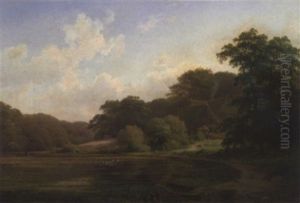Johann Georg Haeselich Paintings
Johann Georg Haeselich was a notable German painter, primarily recognized for his contributions to landscape and marine painting during the 19th century. Born on March 8, 1811, in Hamburg, Germany, Haeselich's artistic journey began under the tutelage of local artists in his hometown, where he developed a profound appreciation for the natural world that would later become the central theme of his work. His early career was marked by extensive travels across Europe, particularly in Italy and the Netherlands, where he studied the works of the Old Masters and was deeply influenced by the Dutch landscape painters of the 17th century.
Haeselich's style evolved over time, characterized by meticulous attention to detail, a keen observation of light and atmosphere, and a delicate handling of color. His landscapes and seascapes often depicted the German countryside and the North Sea coast, capturing the changing moods of nature with a romantic sensibility but also with a sense of realism that was ahead of his time.
Throughout his career, Johann Georg Haeselich actively participated in the German art scene, exhibiting his works in various art exhibitions and becoming a respected member of art societies. His paintings were well-received by both critics and the public, and he gained a considerable following. Despite his success, Haeselich remained devoted to his artistic exploration, continually refining his technique and composition.
Haeselich's legacy is preserved in the collections of several German museums, where his works continue to be admired for their beauty and technical skill. He passed away on December 14, 1891, in Hamburg, leaving behind a body of work that continues to inspire and captivate admirers of landscape painting. His contribution to German art of the 19th century is significant, highlighting a transitional period where artists were beginning to explore more naturalistic and realistic portrayals of the world around them.
